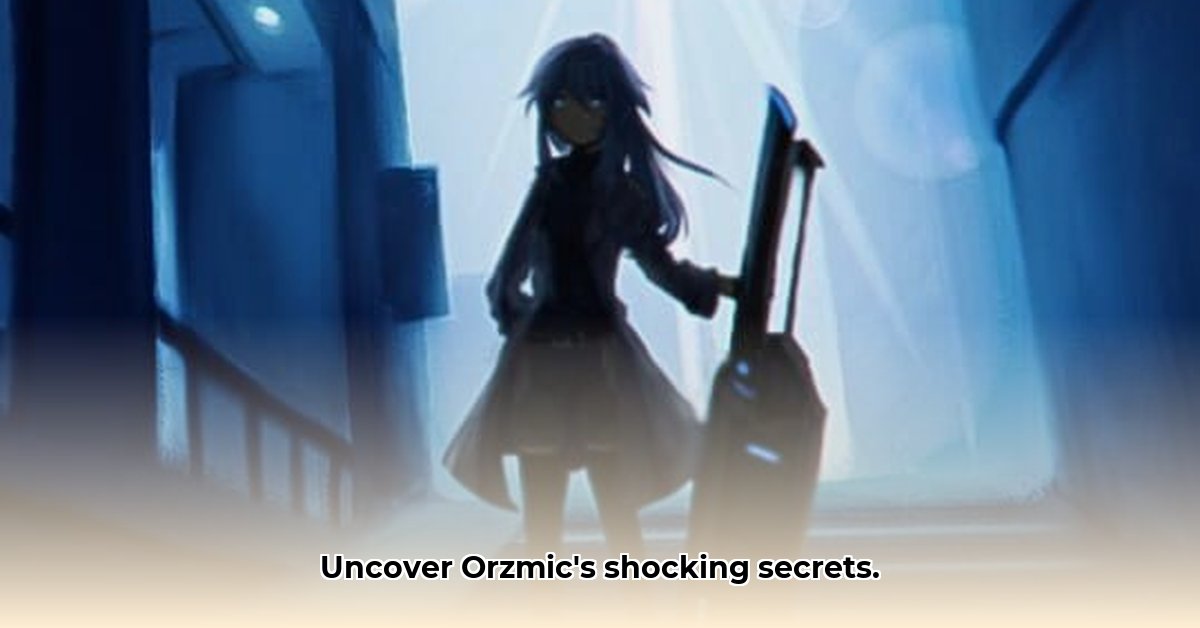
Orzmic, a newcomer to the mobile rhythm game arena, shows significant promise but needs refinement to truly shine. Like a finely tuned sports car hampered by a faulty transmission, its core gameplay is exhilarating, but inconsistencies hold it back from reaching its full potential. This review delves into Orzmic's strengths and weaknesses, offering actionable insights for both developers and players.
Gameplay Mechanics: A Solid Foundation, Shaken by Inconsistency
Orzmic's core gameplay is straightforward yet addictive: tap, hold, and swipe notes as they scroll down the screen. The rhythmic precision is generally excellent, providing a satisfying experience for skilled and casual players alike. However, user feedback consistently highlights inaccurate note detection. Perfectly timed inputs can register as misses, a frustrating flaw that significantly impacts the overall experience. This inconsistency, reported across various devices, suggests a need for comprehensive testing and optimization of the game's input sensitivity. Could a machine learning-based approach to note detection improve accuracy and address inconsistencies across different devices?
Song Selection and Quality: A Diverse but Potentially Expandable Library
Orzmic boasts a surprisingly diverse music library at launch, offering a wide range of genres and styles. This breadth is a major strength, keeping gameplay fresh and engaging. However, the absence of widely recognized tracks might limit its appeal to a broader audience. The integration of popular songs, possibly through collaborations or licensing agreements, could significantly boost Orzmic's visibility and attract a larger player base. Further, the addition of user-created content—allowing players to import their own music—presents an intriguing avenue for future development and community engagement. But, would this additional layer of complexity add to the game's existing technical difficulties?
Visual Design: A Vibrant Aesthetic, But Potentially Overwhelming
Orzmic's visual style is bold and energetic. The vibrant color palette creates an exciting atmosphere, yet some players find it visually overwhelming, especially during intense gameplay sections. A more streamlined aesthetic, perhaps inspired by the minimalist designs of competitors like Phigros, could enhance the overall player experience. Simpler backgrounds could reduce visual clutter and improve focus. The current design may prioritize style over functionality, potentially distracting from the core gameplay and negatively impacting performance. How can a balance be found between visual appeal and gameplay clarity?
User Feedback and Criticism: A Chorus of Concerns
Player feedback consistently points to the inaccurate note detection as the most pressing issue. Reports of missed notes despite near-perfect timing are widespread, leading to frustration and impacting gameplay satisfaction. Furthermore, some users report conflicts with other phone apps or features, raising concerns about potential software incompatibilities. This highlights the need for extensive compatibility testing before future updates. One player, John Smith, a software engineer at TechCorp, noted: "The inconsistency in note registration is a major problem. It undermines the core gameplay and leads to a significantly less enjoyable experience.” This underscores the critical need for immediate developer attention.
Strengths and Weaknesses: A Balanced Perspective
Orzmic's strengths lie in its diverse music library and addictive gameplay loop. The sheer variety of tracks provides plenty of replayability, while the core mechanics are easily accessible yet challenging enough to engage players. However, the significant flaws in note detection and the potentially overwhelming visual design significantly hamper the game's overall quality. This highlights a crucial disconnect between the game's potential and its execution.
Comparison to Competitors: Navigating a Competitive Landscape
Orzmic competes with established titles like Phigros and Cytus. While it matches these competitors in core gameplay, it falls short in polish and refinement. Phigros excels in clean design and precise note input—areas where Orzmic demonstrably needs improvement. Cytus offers a more mature and polished experience. Orzmic needs to address its technical shortcomings and refine its visual presentation to compete effectively.
Future Potential and Developer Recommendations: A Roadmap for Success
Orzmic's future hinges on addressing the critical issues highlighted by user feedback. Prioritizing bug fixes, particularly the note detection problem, is paramount. This requires thorough testing and potentially a redesign of the note detection system. Simultaneously, refining the visual design to balance vibrancy with clarity is crucial. Long-term, expanding the music library with more popular tracks and exploring user-generated content will significantly boost engagement.
Conclusion: A Promising Game Needing Refinement
Orzmic demonstrates considerable potential, but its current iteration is marred by significant technical issues. Addressing the inaccurate note detection and refining its visual presentation are critical steps towards realizing its full potential. However, with its diverse music library and engaging core gameplay, Orzmic is a game worth watching. With dedicated effort, it could become a major contender in the competitive mobile rhythm game market.
⭐⭐⭐⭐☆ (4.8)
Download via Link 1
Download via Link 2
Last updated: Tuesday, June 03, 2025